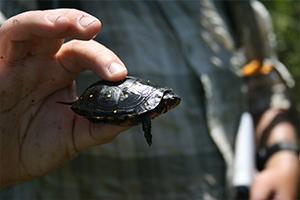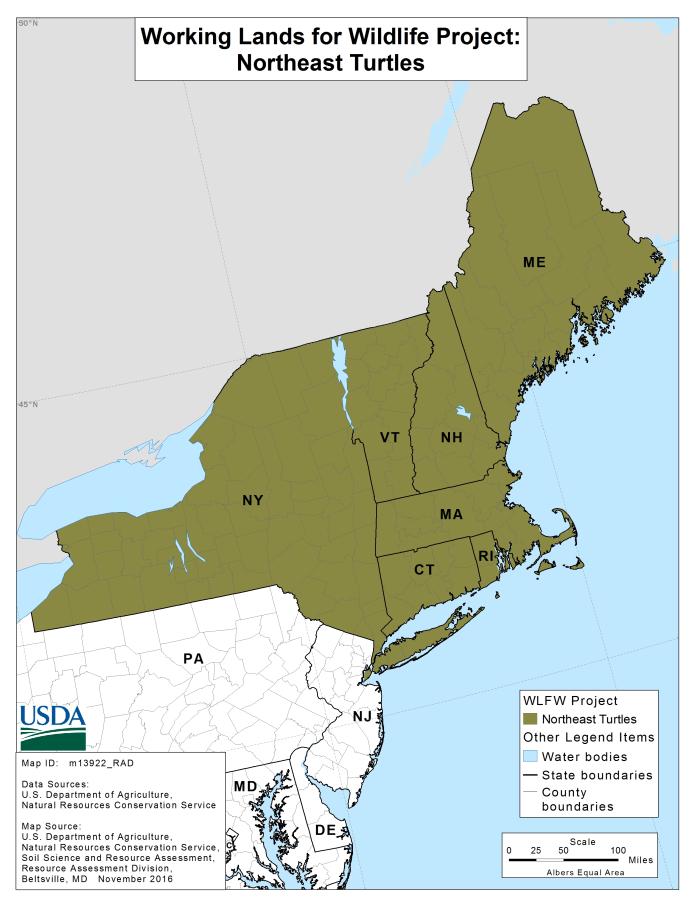Northeast Turtles
The wetlands of the Northeast are home to a variety of wildlife, including the rare Blandings turtle (Emydoidea blandingii), wood turtle (Glyptemys insculpta) and spotted turtle (Clemmys guttata). All three of these turtles are under consideration for listing under the Endangered Species Act.

The wetlands of the Northeast are home to a variety of wildlife, including the rare Blanding's turtle (Emydoidea blandingii), wood turtle (Glyptemys insculpta) and spotted turtle (Clemmys guttata). All three of these turtles are under consideration for listing under the Endangered Species Act. A number of factors have contributed to these turtles’ population struggles, including the loss, fragmentation and degradation of wetland habitat because of development, wetland conversion and invasive plants.
To help reverse the decline of these turtles, NRCS is working with private landowners in the Northeast to increase available high-quality habitat to support these species’ recovery through land protection as well as restoration and enhancement of habitat.
Landowners in Connecticut, Massachusetts, Maine, New Hampshire, New York, Rhode Island and Vermont are helping the Blandings, wood and spotted turtles by making turtle-friendly improvements on working lands. With the help of NRCS, landowners are making wildlife improvements to working lands and protecting lands not suitable for farming with conservation easements. Through conservation practices, landowners are restoring and protecting wetlands, managing healthy riparian areas and stream corridors, and improving grazing and forestry operations.

NRCS offers technical and financial assistance to help agricultural producers voluntarily improve habitat for these turtle species. This assistance helps producers plan and implement a variety of conservation activities, or practices, that benefit waterfowl and other aquatic species.
Technical assistance is free to producers. The agency’s staff of experts and conservation partners work side-by-side with producers to develop a conservation plan. Each plan focuses on the restoration of wetland and associated upland habitats and is tailored to the landowner’s property. These plans provide a roadmap for how to use a system of conservation practices to meet natural resource and production goals.
Financial assistance helps producers pay for the adoption of conservation systems that improve the health of wetland ecosystems. Common conservation practices include conservation cover riparian forested buffering, wetland creation and restoration, planting trees and shrubs, and management of invasive plants.
Easement programs offer landowners that have agricultural or forest practices an incentive to take those areas out of production or to enable them to implement conservation measures that guide when lands are mowed and harvested to avoid impacting these turtle species.
The seven-state turtle project is part of the Working Lands for Wildlife (WLFW) partnership, a collaborative approach to conserve habitat on working lands. WLFW provides technical and financial assistance through the Environmental Quality Incentives Program, Agricultural Conservation Easement Program and Healthy Forests Reserve Program, all conservation programs of the Farm Bill, the largest funding source for conservation on private lands.
Habitat restored for these turtles benefit many other species, including blue-spotted salamander, New England cottontail, American bittern, wood duck, American woodcock, American black duck, moose, bobcat and brook trout.

